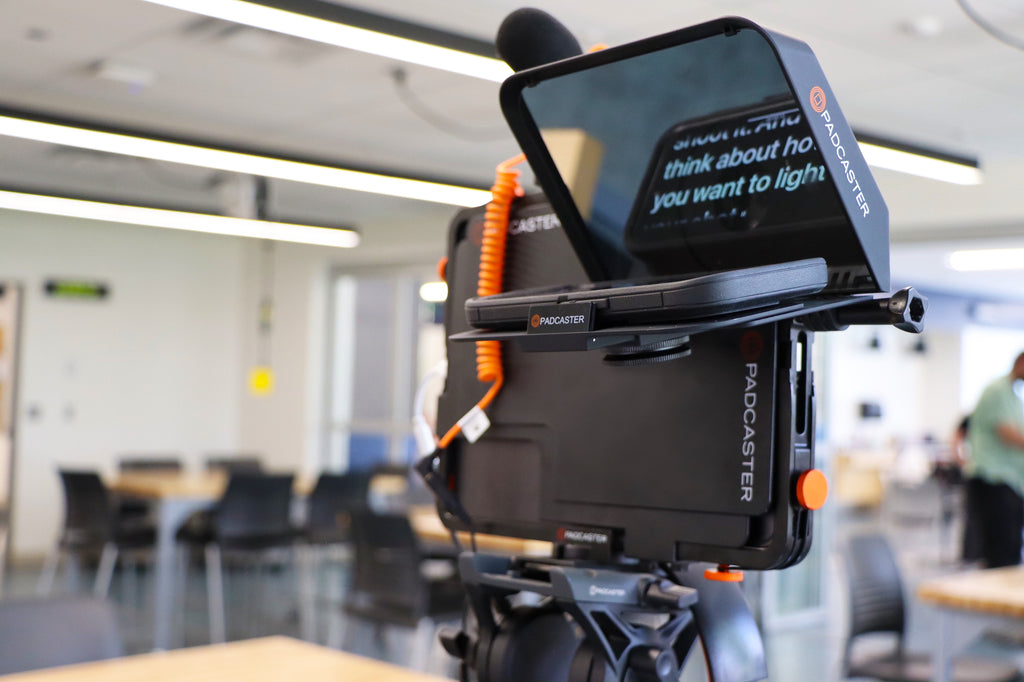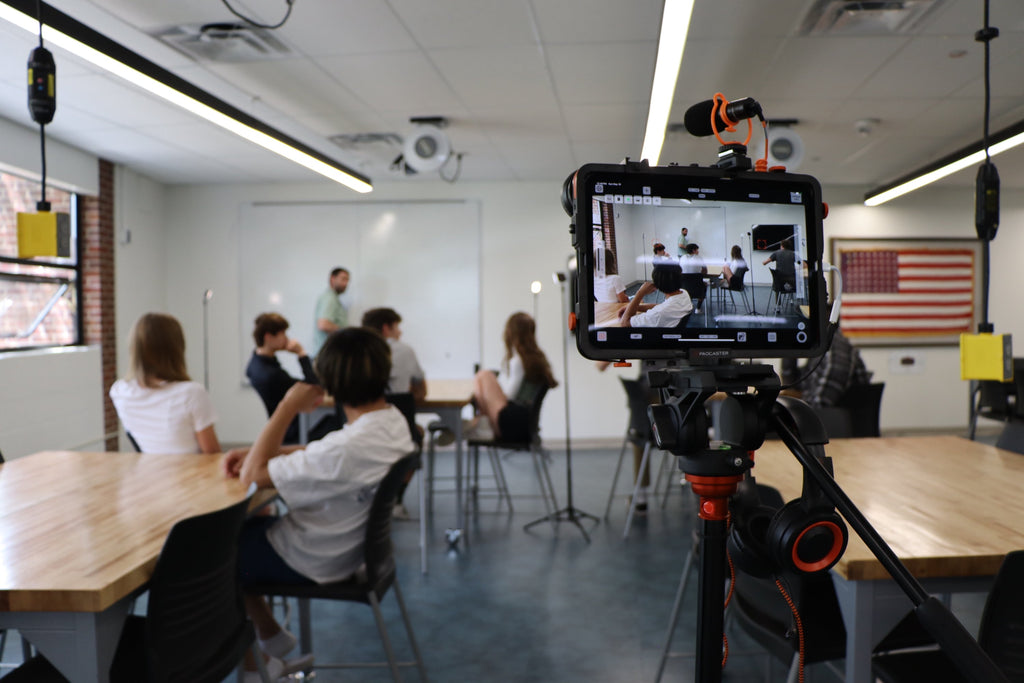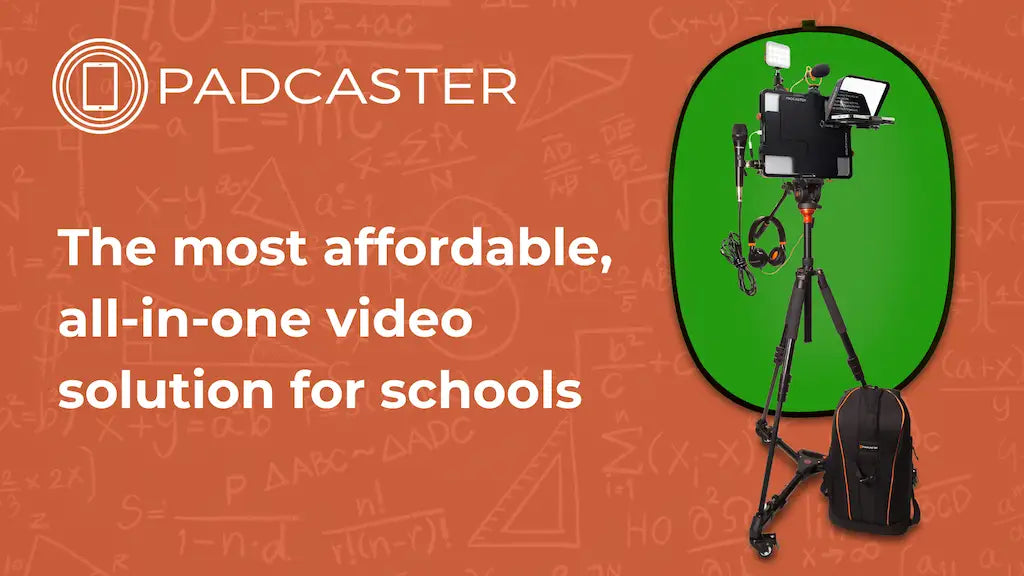
Cindy Gonzales has devoted over 20 years to her career in education technology at Gulliver Academy in South Florida. Each day, using Padcaster, Gonzales produces a news broadcast that is aired to all K-4 classrooms. All 4th-grade students assist as newscasters throughout the year, arriving early at school to film the show that airs the following day. Currently, her lower school newscast program, Early Bird Broadcast, is designed to give each child the chance to experience broadcasting and gain the foundation for future media and broadcast opportunities. Read more about Ms. Gonzales, Early Bird Broadcast and some of her other favorite media projects.
When and how did you first decide that you wanted to become an educator?
As far as I can remember, I have always wanted to be a teacher. I have a passion to help others. I am always looking to broaden my knowledge and discover ways to make learning as fun as possible.
Tell us a little bit about your background as a teacher?
I studied inclusive education and special education at Syracuse University. I have always focused on ways to differentiate instruction, based on academic needs and/or technology integration possibilities. I received my Masters in Educational Technology from Barry University a few years into my teaching career.
How did you first become interested in technology? In Video Production?
I have always been interested in making learning fun and integrating technology into my classroom and lesson planning. As an early adopter of technology and media, I was often the teacher who was tagged to try out, test and model new technologies. I was quick to realize that a camera can bring instant “fun” to a lesson. With that discovery, I began to explore ways to integrate video and other technologies. I shared this passion with colleagues, as well. In time, my role emerged into working with students and teachers from kinder-third grade, in finding ways to best integrate technology and computer science into the curriculum, in addition to expanding my knowledge of broadcast journalism for lower school students.
Why do you think starting to teach broadcast journalism in lower school is beneficial for young students?
Broadcast journalism provides young students with many skills. I believe one of the most important skills is an opportunity to build their confidence. Students who are shy and quiet may not have ever tried broadcast journalism but with the way our program is set up, all fourth graders are given the opportunity to try it out. Once they enter our small broadcast studio and observe the routine, they feel more comfortable and are willing to give reporting on camera a try and discover their voice. Students also learn to understand their audience, to present the information and to use creativity to share it.
Tell us about your news broadcast, ‘Early Bird Broadcast’?
Each week five 4th grade students are assigned to be part of the Early Bird Broadcast Team. They arrive before the school day to write short scripts, rehearse and record for the following day’s broadcast. At the culmination of the year, all 120 fourth grade students have the opportunity to experience broadcast journalism.
Aside from the ‘Early Bird Broadcast’, how else are you integrating video production into your curriculum at the classroom level?
I have supported several grade-level teams by using the Padcaster for video production. For example, our 2nd-grade students wrote biographies on selected famous people. As part of their assessment, each student came to my studio to record a video about their famous person. We used the green screen effect which allowed each student to “report” from a place representing their biography. This project integrated social studies, writing, and technology.
Another example is the 4th grade Florida Day diorama project. Fourth graders researched different Native American tribes located in Florida. They worked together to design and build a diorama representing their tribe. The fourth graders came to the green recording studio to record facts about their tribes while using the green screen magic to make them appear inside their diorama. The students “walked” and interacted inside their diorama. Since we have a very small green recording studio, we were thankful to have the Padcaster with the wide angle lens. This lens allowed us to be able to film a larger area which made the videos turn out amazing. The microphones attached to the Padcaster also allowed us to have quality sound in the video without all of the outside noise.
What feedback from students have you gotten about the Padcaster?
There isn’t a day that goes by where a student does not stop me in the hall to ask when I will be returning to their class to film again. My after school video creation team loves using the Padcaster to film news segments around the school. The Padcaster allows them to travel around the campus with an all in one unit and makes them feel professional.
What advice would you tell a teacher first starting to experiment with video?
Consider purchasing the wheels for the Padcaster. Moving the Padcaster around can be quite challenging without the wheels for my younger students. I also recommend using the lens if filming in a small space with a limited amount of distance.
Padcaster transforms your iPad or smartphone into an all-in-one mobile production studio so you can create professional-quality videos from or anywhere. Whether it’s for telecommuting, remote broadcasting or livestreaming -- Padcaster will help you produce high-quality content wherever you are. Fill out the form below to get in touch with one of our sales consultants!
By Marin Morales
Need More Information?
Fill out the form here to get in touch with a member of the Padcaster Team.


